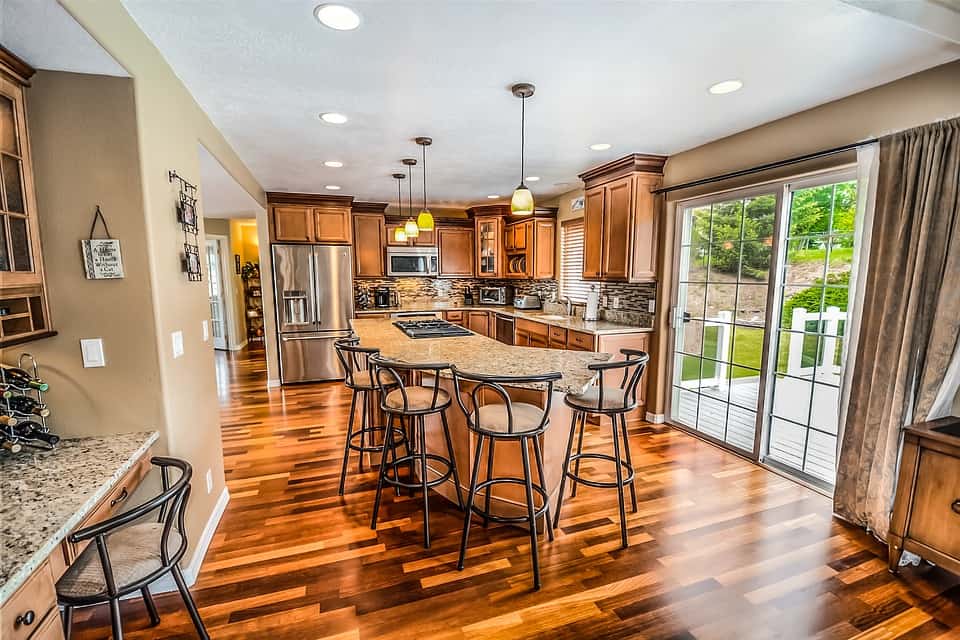Engineered wood floors add warmth, style, and aura to our rooms. They might not cost as much as their real-wood counterparts but still bless our homes with the same appeal. You can also count on them to complement your existing furniture as engineered floors come in a variety of finishes and patterns.
Since they do so much for our homes to look a touch above the rest, the least engineered wood floors deserve from our side is to keep them maintained. Provided we keep our end of the bargain by not letting dust, debris, and liquid spills settle on them for long, these floors would reward us by retaining their original shine for years to come.
Here’s how you can clean engineered wood floors on your own:
Cleaning up Dirt and Debris
If you’re dealing with dry dirt and debris, follow the following steps to help your engineered wood floor get rid of it.
Step # 1: Start with a broom
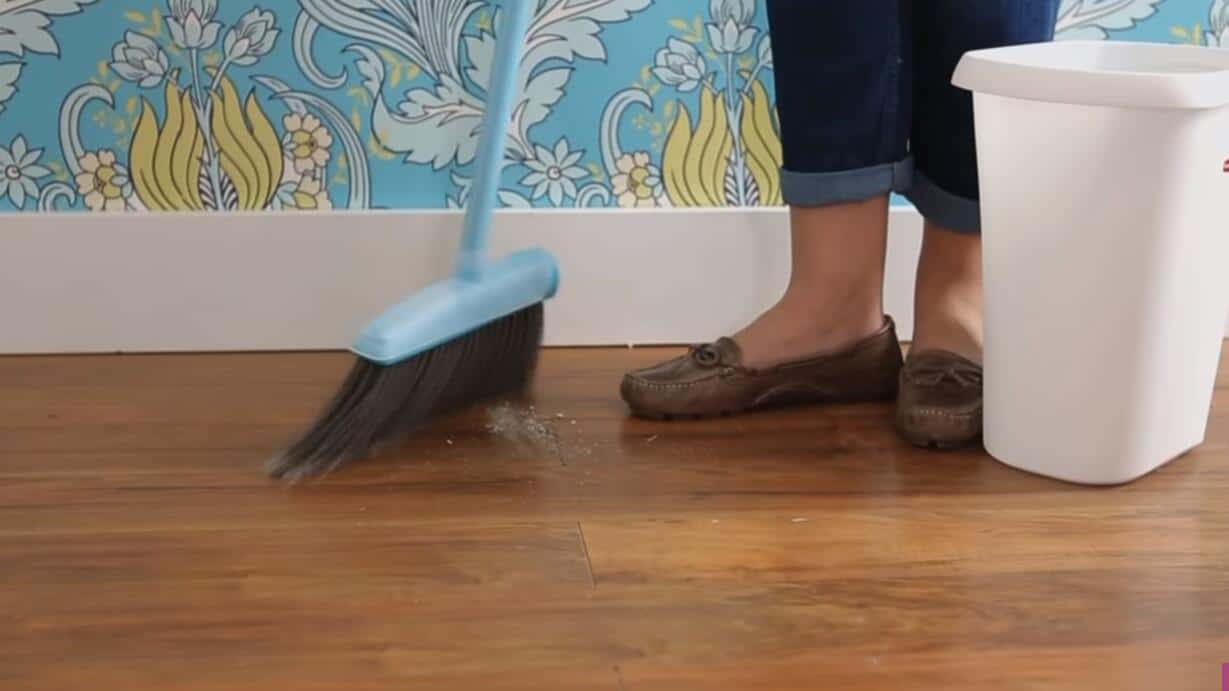
Rooms which serve host to a large amount of foot traffic act as magnets to loose pieces of dirt and small stones. You can use a soft-bristled broom to contain all the dirt on the engineered wood floor into a small, central area.
When sweeping for dirt, pay special attention to areas which you think are more susceptible to having dirt. Once you’re done collecting the dirt, nudge it into a dustpan, before disposing it into a trash can lying outside.
Step # 2: Vacuum the floor
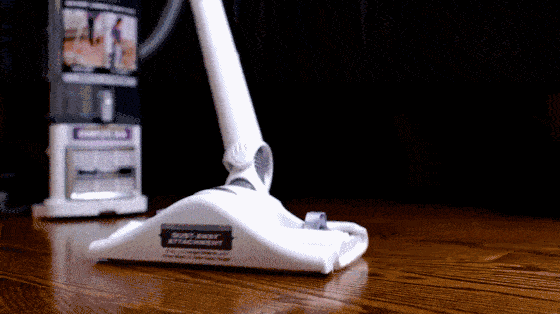
While we always recommend using a robot vacuum for hardwood floors – since its soft bristles prevent any damage to the wood’s surface, we also realize that not everyone can afford their asking price. Which is why you can use cordless vacuums or cordless stick vacuums.
If you’ve wood floors in multiple rooms, the limited battery timing of cordless models might render them ineffective. In such a scenario, you could use a canister vacuum or a corded stick vacuum. Whatever floor cleaner you choose, make sure it comes with a “hard floor” mode.
Step # 3: Use a dry microfiber mop
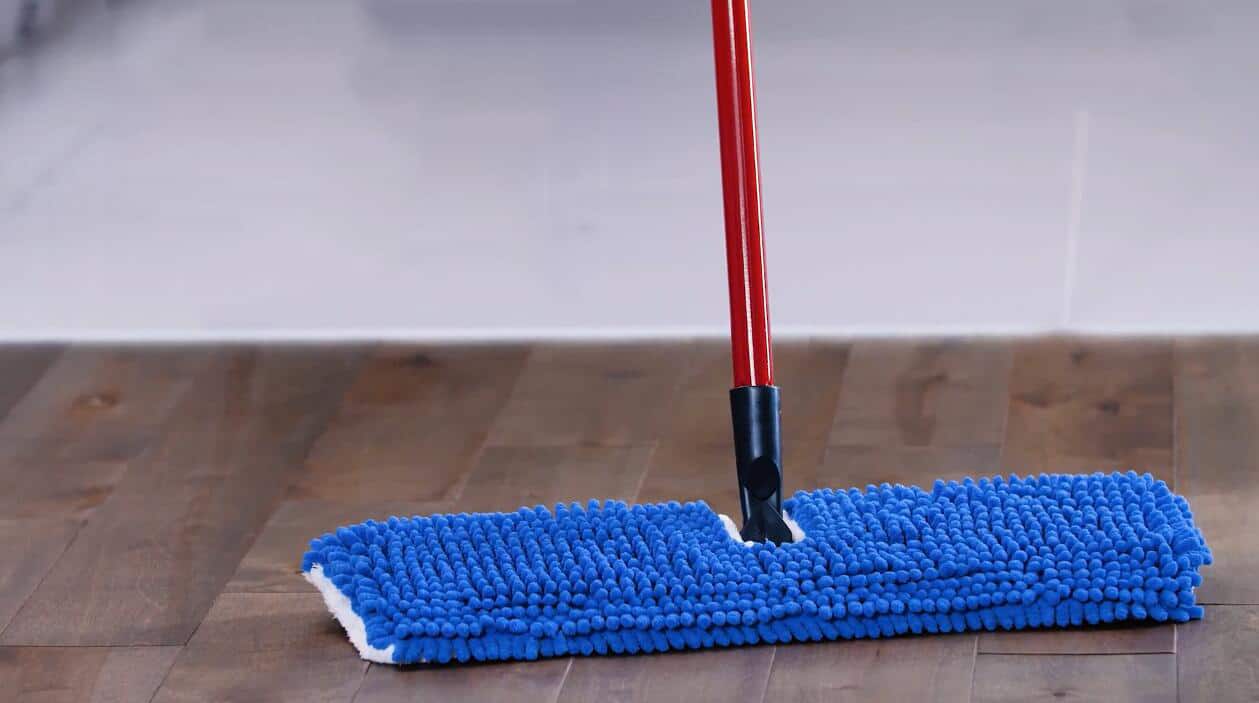
Once you’re done vacuuming, use a dry microfiber mop to freshen-up the floor. Make sure that you pick up all the debris that might have been blown onto the surface of the hardwood during the vacuuming. Or else the floor won’t look spotless.
The reason why we’re recommending a dry microfiber mop – and NOT a regular mop – is because the former might have abrasive bristles that could cause irreparable damage to your engineered hardwood floor by scratching its upper surface.
Step # 4: Use a slightly damp mop (optional)
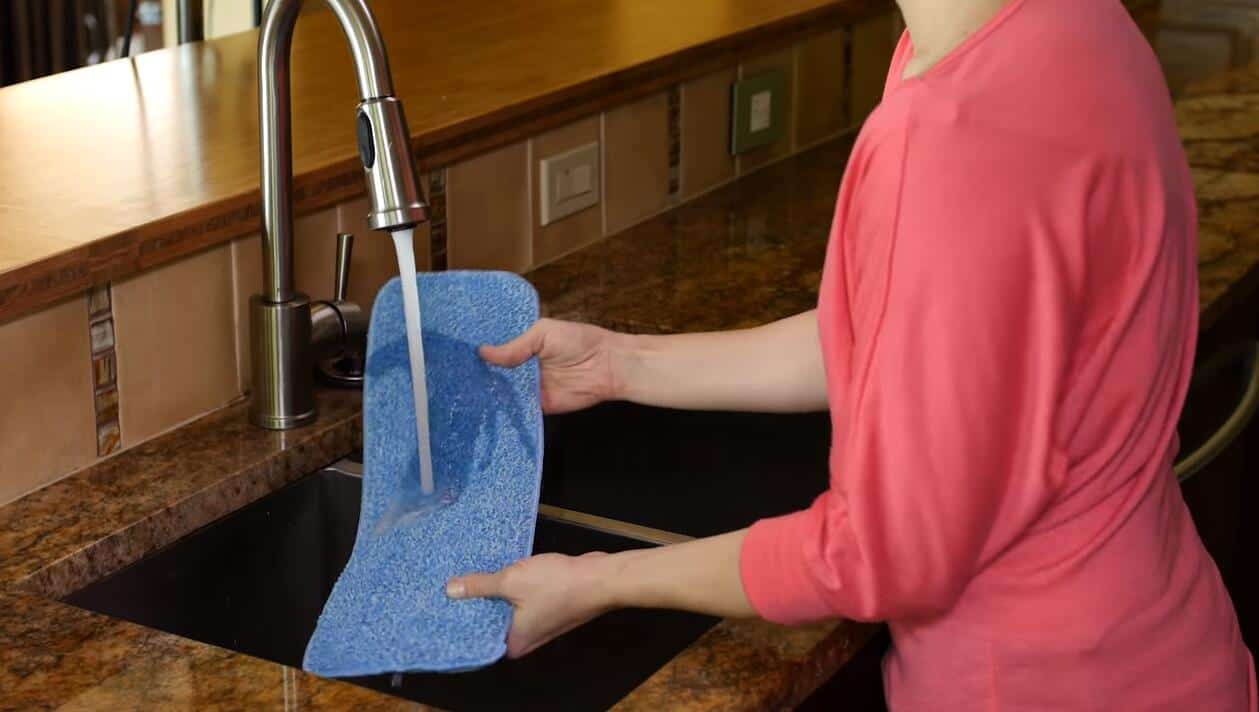
If you don’t have a microfiber mop, or you don’t want to use it, you can turn to your traditional dry mop. Just make sure that you have dampened it with water before using the traditional mop. Squeeze out as much water from the mop as possible before you apply it to the hardwood.
Always make sure that the mop is only slightly damp as there’s no need for buckets of liquid to clean an engineered hardwood floor. If, after the cleaning you notice some droplets on the surface, clean them up using a towel.
Step # 5: Place a doormat at the entrance (Tip)
Don’t like doing all the cleaning work that we described in the previous steps? There’s good news for you: you can reduce the need for it by placing a rug at the entrance of your room. It will catch most of the dirt and grime that comes from outside, thereby saving you from any potential cleaning work.
If you want to be extra careful, you can place rugs on both the inner as well as the outer side of the room’s door. This way you can sure that even if the arriving guest forgot to clean their shoes before coming in, the doormat lying inside the door would make them remember it.
Cleaning up liquid spills
Liquid spills are the number one enemy of engineered hardwood floors. The moisture they spread over the wood’s surface, if left unpicked, might cause cracks in the long run. It is essential, therefore, that you clean up liquid spills as early as possible.
Step # 1: Get a liquid cleaner
If you can afford it, always get a liquid cleaner recommended by the company which made the floor. That’s because each type of engineered hardwood might have different properties, those which you can disturb by using the wrong type of liquid cleaner.
To determine which cleaner is recommended for your engineered wood floor, check out its instruction manual. If you can’t find anything of note there, contact the manufacturer by email or phone. Ask them to give you a liquid-cleaner recommendation.
Step # 2: Start scrubbing
If there’s a specific portion of the wood surface which is particularly dirt – or you can see stubborn stains on it – you can clean it up using a liquid cleaner. Pour a small quantity of liquid cleaner over the surface where you see signs of dirtiness, and then scrub with a clean cloth.
Keep on wiping the hardwood surface until the stain is no longer visible. Make sure that once you’ve cleaned the floor, no excess liquid cleaner is left on the surface. If there is some excess cleaner, you don’t need water to clean it off. Just wipe it off using a cloth or clean paper towel.
Step # 3: Avoid these cleaners (Tip)
Most people think that since both the surfaces look similar, they can use cleaners designed for vinyl or tile flooring on engineered hardwood floors as well. Unfortunately, that’s a costly mistake, one which might end up damaging your wood floor permanently. So only use a manufacturer-recommended cleaner for your engineered hardwood floor.
Conclusion
With the aura, appeal, and style statement that they add to our homes, the least we can do for engineered wood floors is to clean them regularly. Doing that would do as much good to your home’s appearance as it would to the appearance of the wood floor – as both of them are dependent on each other.
